Email.
Get support for your Esendex Email products.
How do you find an email header in your email client?
What is an email header?
Emails contain three main elements: the body, the envelope, and the header. You probably already know what the body of an email refers to — the main text of the message. Everything written in an email, from “Dear Professor Dumbledore” to “Sincerely Yours, Harry Potter,” is considered the body of the message. The message’s sender and recipient can both see this information.
The message envelope is something that neither the sender nor recipient see. The envelope is the information that the email program and outgoing server use to communicate and deliver the message to the correct email address. Then, the message writer hits “send” and creates this information before the mail lands in the recipient’s inbox.
Finally, the email header is a log of an email’s technical details that both the sender and recipient can see, though it can’t be as easily viewed as the email body. It contains information that gives readers details in regards to the sender, receiver, and the message. This includes any email addresses that are involved in the conversation, the servers the email passed through while being sent, and more. Check out what an email header looks like below.
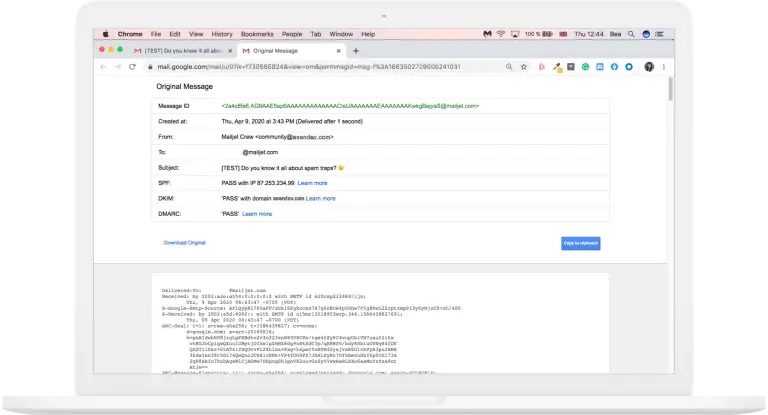
What are email headers used for?
Email headers are usually used to see information such as who has sent and received a message, where the message has passed through a server, and what kind of errors may have prevented the email from reaching its intended destination. For email deliverability, headers can provide helpful information about positive or negative interactions with a message.
Since the header contains the email’s routing information, you can view exactly which servers, ISPs, and email platforms the message has been through. You can easily see if the email message was secure and if it reached its recipient without errors or changes. If the message encountered a problem on its way to its destination or was never delivered at all, a tech-savvy user can review the header and figure out exactly what affected the message. Did Harry’s email go to Aberfoth Dumbledore, instead of Albus?
After identifying issues, the user can then fix problems that help new emails get where they need to go.
Due to their ability to quickly help solve many delivery issues, headers are a valuable resource for organizations concerned with deliverability and the technical process of sending an email. That’s why it is important if you are beginning an email campaign, to correctly configure your delivery systems beforehand and send a few test emails. With the right tools in place, you will be able to give yourself a leg up in deliverability before your email even leaves your outbox.
What are the standard parts of an email header?
Email headers provide you with information you may want or need. The standard parts of an email header are below:
- From: This section refers to the name and email address of the sender, which is the origin of the email.
- To: This section refers to the name and email address of the recipient. If there is more than one recipient, the name and email address of each recipient will appear in this section.
- Date: This section refers to the sent email’s day and time.
Elsewhere in the header, we can also find the following technical sections:
- Subject: This section refers to the subject line used in the email message.
- Return-Path: If an error is found while the email is being sent or, for any reason, the email cannot reach the intended inbox, the mail is sent to the address specified in this section. In this case, it will generally be send back to the sender — via the “return path” — specified in the “from” section.
- Received: This section refers to all of the message’s recipients. For each successful point of receipt, we can see the IP address and the different authentication protocols (SPF, DKIM-signature, DMARC) that have (or have not) been validated by the different servers.
- Message-ID: This section refers to the unique identifier of each specific email message.
- MIME-version: When present, MIME-version (Multipurpose Internet Mail Extensions) refers to programs that support email attachments outside of the main message, like static images and video and audio components.
- Content-type: This section refers to the different content types in each message (text, jpeg, etc).
How do you find an email header in your email client?
Almost all webmail providers contain email headers for each message. Below, you can see instructions for finding headers on several popular email clients.
Email headers in Gmail
In Google Mail, you can click on the three dots in the top right corner of any email message you have, and then click the “show original” option. Then, this will show you the header.
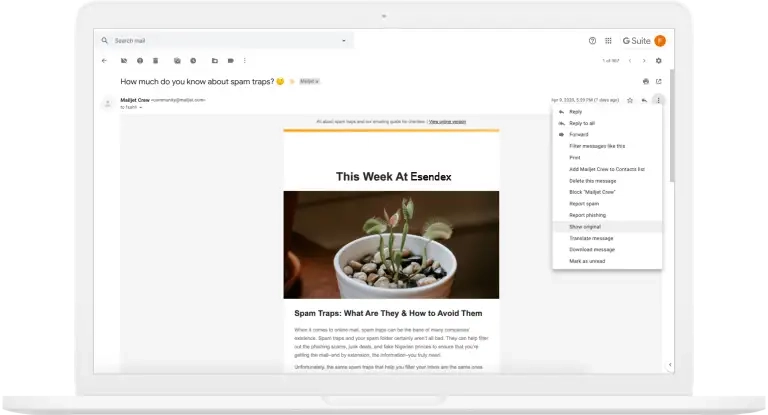
Email headers in Microsoft Outlook (Hotmail) website and app
On the Microsoft Outlook website, you can click the three dots in the upper right corner of the email. Then, you can click “view message source” in the menu to view the full email header.
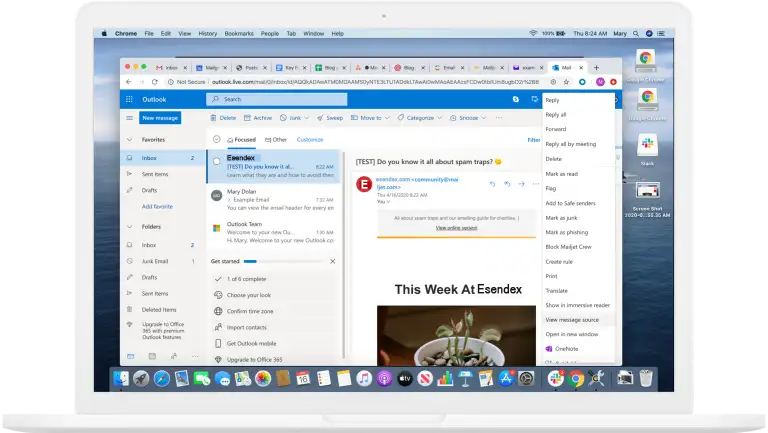
In the Microsoft Outlook app, you can double-click the email to see it in a separate window. Then, click “file” and then click “properties.” Then, you can see the header information in the “internet headers” section at the bottom of the screen.
Email headers in Yahoo Mail
In Yahoo Mail, open the message and click the “more” button above it. Then, click “view raw message.” This will show you the header.
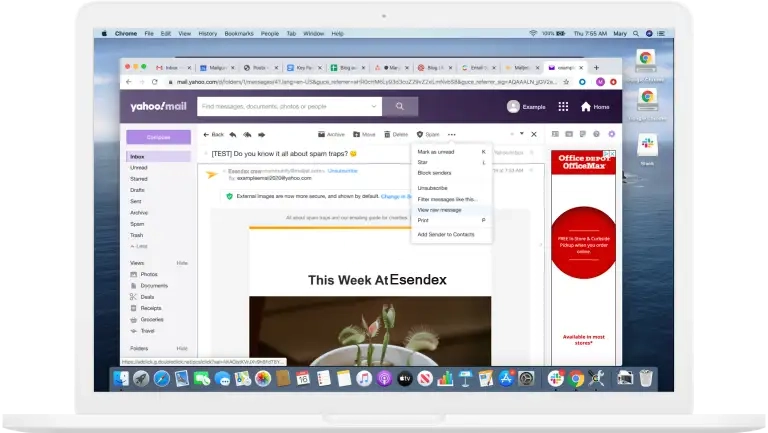
Email headers in Apple Mail
In Apple Mail, you can open the message and select the “view” option in the menu pane. Then, choose the “message” option and finally click on the “All Headers” option. This will display your message’s email header.
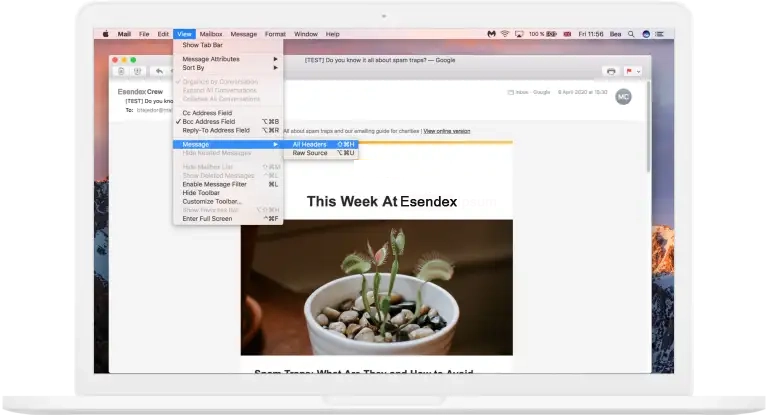
What should you remember about email headers?
Email headers may seem unfamiliar to those who have never viewed them. However, you can use them to find out detailed information about your emails’ journey and if they are being properly delivered. They are an important part of a good deliverability strategy. Becoming familiar with them will help you launch successful email campaigns and view their results.
Recommended articles
Can't find what you're looking for?
Speak to a member of our support team.